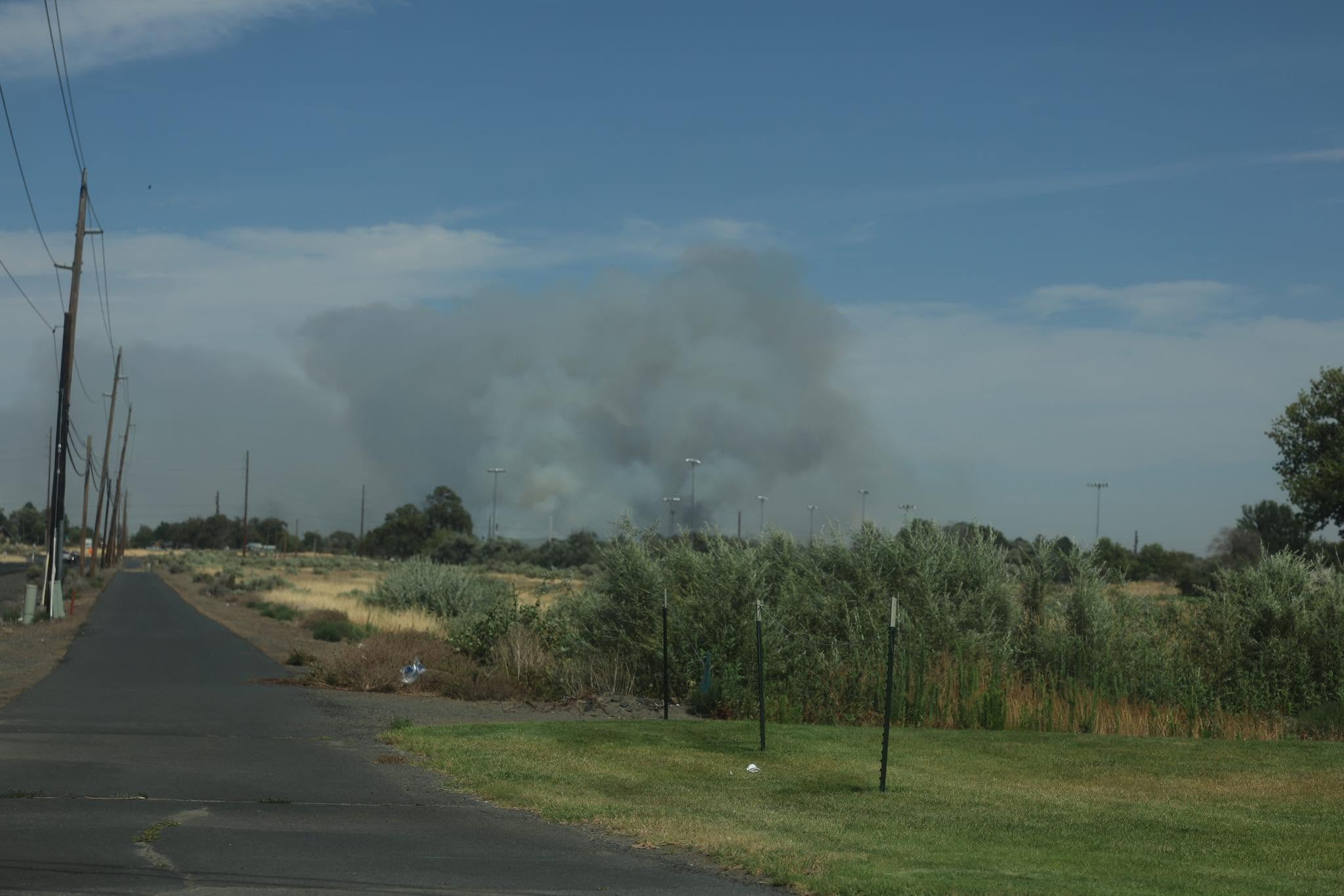COVID-19 surge threatens to overwhelm local hospitals as vaccine uptick offers glimmer of hope
Published 7:00 am Saturday, August 14, 2021

- Registered nurse Heather McLeod dismantles medical equipment while clearing out a negative pressure room after discharging a COVID-19 patient Tuesday, July 27, 2021, at CHI St. Anthony Hospital, Pendleton. As of Thursday, Aug. 12, according to state data, only two intensive care unit beds were available in hospitals in Morrow, Umatilla, Union, Wallowa, Baker and Malheur counties.
PENDLETON — In many parts of Eastern Oregon, the pandemic never has been worse.
COVID-19 infection is spreading at an unprecedented rate in Umatilla and Morrow counties. Week after week, both counties report COVID-19 case counts that dwarf previous pandemic surges. And as the latest surge continues unabated, commissioners in the two counties declared a state of emergency this week, opening the door for state help as area hospitals fill with patients.
“With the new delta variant, it’s much more transmissible and many more people are getting sick with COVID than we’ve ever seen in the past,” said Morrow County Commissioner Don Russell, who added, “There’s a lot of people who have been vaccine resistant. With the new delta variant, they have to reconsider that. You need to put your personal biases behind you and look at the science.”
Hospitals in both counties are facing a serious influx of patients and are finding it nearly impossible to transfer patients to other medical facilities for a higher level of care, officials say.
“Plainly put, there are little to no beds to transfer patients to,” Caitlin Cozad, a spokesperson with Good Shepherd Medical Center in Hermiston, said in an email.
And if the surge doesn’t diminish soon, officials are worried the hospitals could be overwhelmed.
Umatilla County Public Health Director Joe Fiumara pointed to Jackson and Josephine counties, where COVID-19 patients are exceeding hospital capacity and health care workers are treating people in the hallways because they’ve run out of beds. Fiumara said he is worried the same could happen in Umatilla County.
“We could end up with people who need care and can’t get in to receive it, whether it’s a vehicle accident or a heart attack,” Fiumara said. “I’m dreading when we get to the point when somebody dies in the parking lot or the waiting room because there wasn’t anywhere for them to go. We’re not there yet. I just don’t want to get there.”
As of Thursday, Aug. 12, only two intensive care unit beds were available in hospitals across Region 9, an area that encompasses Morrow, Umatilla, Union, Wallowa, Baker and Malheur counties, according to the state.
The flood of COVID-19 patients comes as the state breaks its all-time COVID-19 hospitalization record for four consecutive days this week, topping out at 733 on Friday, Aug. 13.
Those soaring infection rates prompted Gov. Kate Brown to reinstate mask requirements in public indoor spaces this week, a measure that took effect Aug. 13. That same day, Brown announced she’ll send 500 Oregon National Guard members next week to assist 20 struggling hospitals statewide
“I cannot emphasize enough the seriousness of this crisis for all Oregonians, especially those who might need emergency or intensive care,” Brown said in a video.
Stare down with delta
Over the past week, 17 people have been hospitalized with COVID-19 at Good Shepherd, a sharp uptick from the five who were hospitalized earlier this month. Every day, the hospital is using a month’s worth of oxygen due to the latest surge and will “carefully monitor our usage while working closely with our (oxygen) supplier to keep up with the demand,” Cozad said.
As of Thursday, Aug. 12, 40% of Good Shepherd’s 30 patients had COVID-19.
CHI St. Anthony, Pendleton, is facing similar challenges. Nearly one in three patients in the hospital’s emergency department have COVID-19, Emily Smith, a hospital spokesperson, said in an email.
At times, the hospital has “been unable to transfer patients completely, and other times we are having to call (more than 20) hospitals before we find an open bed,” Smith said.
As hospitals across the Northwest fill with COVID-19 patients, hospitals in Umatilla and Morrow counties are sending some patients to facilities further and further away for higher levels of care, including Bend, Boise, Reno or San Francisco.
“The strain is tremendous on hospitals in our region due to this surge,” Cozad said.
All this is taking a toll on health care workers, officials say.
“This pandemic has waged on far longer than many of us thought it would,” Smith said, “and at the point when we felt like it was starting to get better, it has only gotten worse.”
Fiumara said public health employees are similarly exhausted and was sympathetic for what hospital workers are experiencing.
“It has got to be extremely frustrating to see people coming in for what is a preventable situation,” Fiumara said. “Because they chose not to take the steps needed to avoid it. This is a preventable disease now.”
If the surge continues, area hospitals could resort to suspending elective surgeries. Smith said St. Anthony is evaluating surgeries on a “day-to-day and case-by-case basis” and hopes to avoid suspending surgeries, “but we will do what is needed to ensure care for all who require it.”
The dire conditions at hospitals come as the counties report some of the highest COVID-19 infection rates statewide. Umatilla County has reported more than 400 cases for three straight weeks — totals that are far higher than any of the county’s previous surges, according to state data.
Morrow County this week is expected to report its highest weekly COVID-19 case count since the pandemic started, with more than 100 cases, according to Russell. The two ZIP codes encompassing Irrigon and Boardman reported the most new COVID-19 cases per capita in Oregon over the past week, The Oregonian/OregonLive reported.
Cases rise among youth as vaccinations increase
Fiumara said young people are increasingly making up the majority of cases, and many are falling seriously ill, a national trend that bucks previous understandings of how the pandemic affects youths. Regional hospitals, he added, are reporting that more young people are falling seriously ill than ever before during the pandemic.
This week, the state reported a 35-year-old Morrow County woman with COVID-19 died in her home. In Union County, a 19-year-old woman became Oregon’s fourth resident younger than 20 to die with COVID-19 since the pandemic began.
“It is spreading differently and affecting people differently,” Fiumara said of the delta variant, which is estimated to be at least twice as transmissible as the original coronavirus strain. “Every day, we get more evidence that supports that it’s a more severe illness than the original variant. And it’s still largely preventable.”
The Umatilla County Public Health Department has not recently combed through data to determine how case rates compare among vaccinated and unvaccinated people.
Recent data from the Oregon Health Authority shows the percentage of vaccinated people contracting COVID-19 is increasing as the delta variant spreads, but the vaccines still are highly effective against preventing severe illness and death, health officials say.
In July, 50 out of Oregon’s 55 COVID-19 deaths were among people who were either unvaccinated or partially vaccinated, according to the state. The state also reports more than 90% of Oregonians hospitalized within two weeks of their positive tests weren’t fully vaccinated.
But amid the latest surge comes a glimmer of hope, Fiumara said. For four straight weeks, Umatilla County reported increased COVID-19 vaccinations.
In mid-July, the county saw less than 600 people vaccinated in a single week. This week, that number jumped to nearly 1,000 people, according to county health data.
“They’re seeing the writing on the wall,” Fiumara said. “There are more places and more businesses putting mandates in place. … And we’re seeing (case counts) go up and they’re seeing things happen and I think that’s triggering that decision. It is unfortunate, in my mind, that it takes hospitalizations going up for people to make these decisions.”









